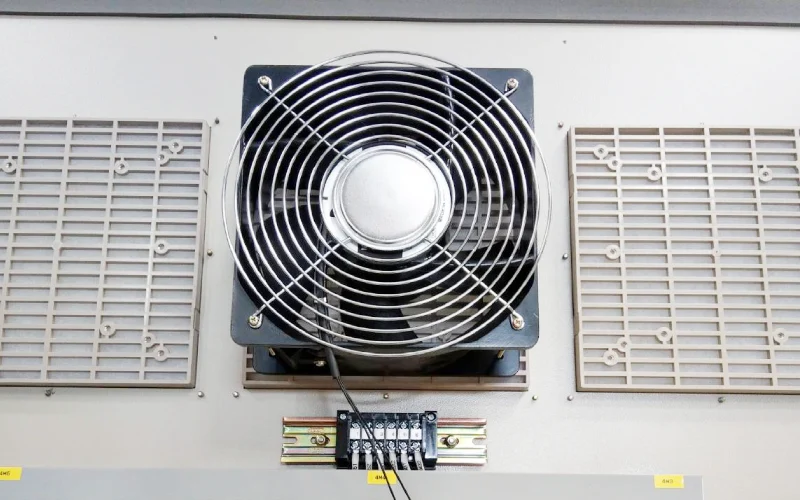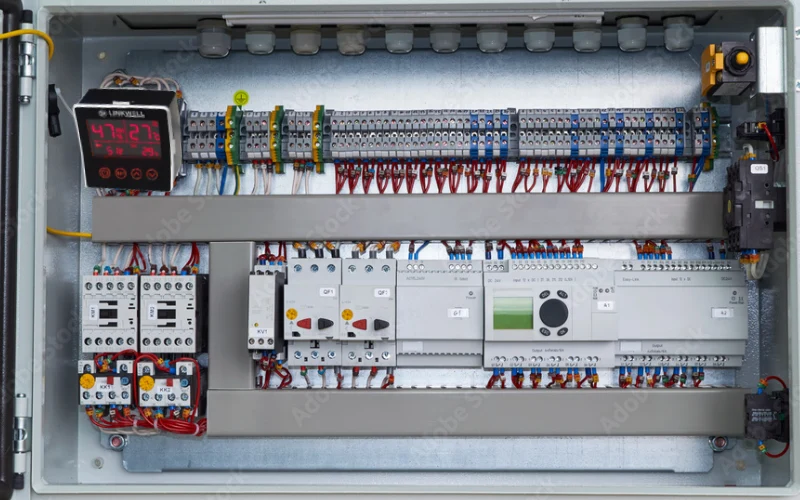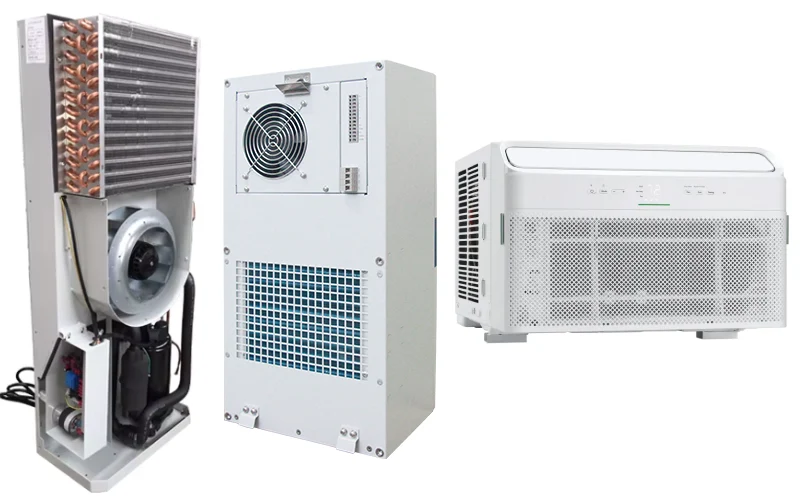When you look at single phase vs three phase electricity, the key difference is in how each system supplies power. Three-phase electricity provides a steadier and more efficient flow, which is ideal for powering heavy equipment or large facilities. If you’re aiming for long-term savings and dependable performance in bigger operations, three-phase electricity is the smart choice. Here’s why that’s important:
- Three-phase systems deliver more power using less wiring, making them a great fit for factories, commercial buildings, or busy office environments.
- They easily support large machinery, resulting in fewer interruptions and smoother operation.
- While single-phase electricity may be cheaper to install initially, running multiple devices on it can lead to higher costs over time.
With Linkwell, you get expertly designed electrical control panels and transformers tailored for both single phase and three phase electricity applications. This ensures your system runs efficiently and reliably, no matter the scale of your project.
Key Takeaways
- Three-phase electricity provides a steady and efficient power flow, making it ideal for heavy machinery and large facilities.
- Single-phase power is suitable for homes and small offices, offering a simpler and more cost-effective solution for light electrical needs.
- Choosing the right power system depends on your needs; three-phase systems are better for high energy demands, while single-phase works well for everyday appliances.
- Linkwell offers tailored electrical control panels and transformers for both single-phase and three-phase applications, ensuring reliable performance.
- Consider future expansion when selecting a power system; three-phase power allows for greater flexibility and efficiency as your needs grow.
Single Phase vs Three Phase Electricity
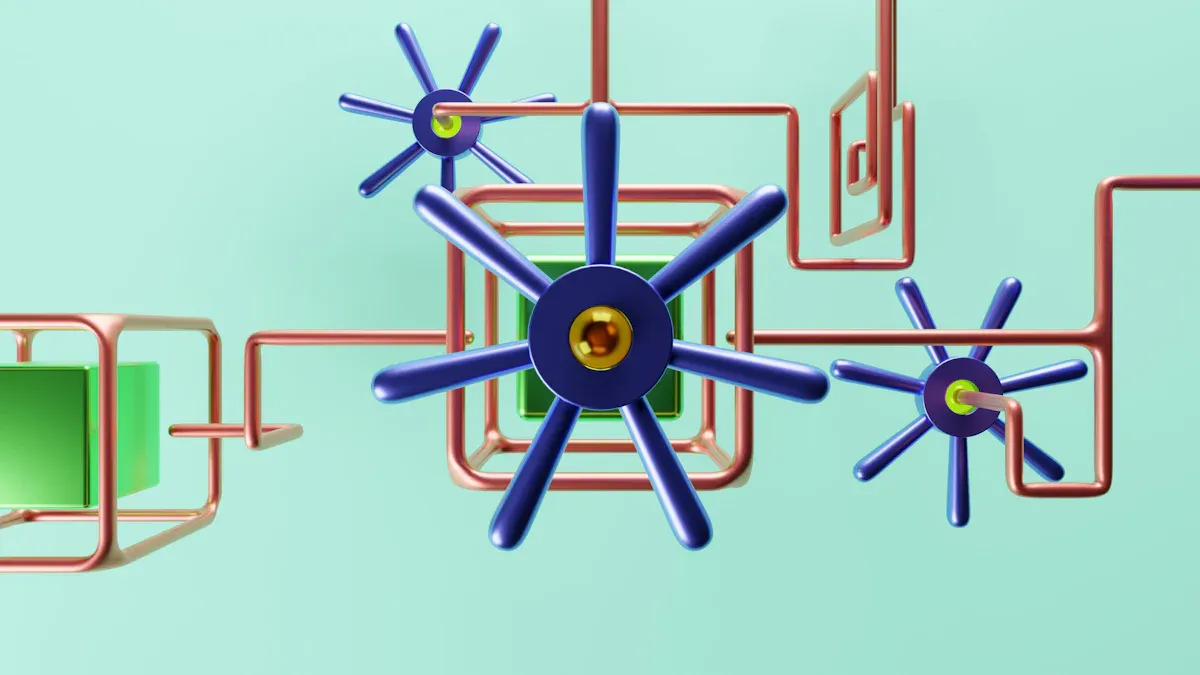
What Is Single-Phase Power?
Single-phase power is the type of electricity you find in most homes. It uses two wires—one for the current and one for the return path. This setup works well for lighting, small appliances, and basic electronics. You get a single alternating current that rises and falls in a smooth wave. Because of this, the power delivery is not constant. Sometimes, the voltage drops to zero before rising again. That’s why you might notice lights flicker when you turn on a big appliance.
You see single-phase power in places where the electrical load stays light. Think about your kitchen, living room, or a small office. Most of your daily devices—like your TV, fridge, or laptop—run perfectly on this system. Linkwell’s electrical control panels and single-phase transformers help manage and protect these circuits. They keep your home or small business running safely and efficiently.
What Is Three-Phase Power?
Three-phase power is a step up. It uses three wires, each carrying its own alternating current. These currents are spaced 120 degrees apart, so the power never drops to zero. Instead, you get a steady, continuous flow of electricity. This makes three-phase power perfect for heavy-duty equipment, large HVAC systems, and industrial machines.
You’ll find three-phase power in factories, big office buildings, and commercial kitchens. It handles higher loads without breaking a sweat. The motors run smoother, and the equipment lasts longer. Linkwell’s three-phase electrical control panels and transformers are designed for these demanding environments. They help you control, monitor, and protect your equipment, even when the workload gets intense.
Tip: If you plan to expand your business or add more machines, three-phase power gives you the flexibility and efficiency you need.
Difference Between Single Phase and Three Phase
When you compare single phase vs three phase electricity, you notice some clear differences. The main one is how each system delivers power. Single-phase power gives you a pulsating flow, while three-phase power offers a constant, smooth supply. This affects everything from how your lights work to how your machines perform.
Here’s a quick table to help you see the difference between single phase and three phase at a glance:
| Aspect | Single Phase | Three Phase |
|---|---|---|
| Number of Conductors | Two (or three with neutral) | Three (or four with neutral) |
| Voltage Peaks | Twice per cycle | Six times per cycle |
| Power Delivery | Pulsating | Constant, smoother |
| Applications | Homes, small offices | Factories, large buildings |
| Motor Efficiency | Lower, less starting torque | Higher, more starting torque |
You might wonder why this matters. The difference between single phase and three phase affects how much power you can use and how stable your system feels. Single-phase systems work best for homes and light commercial spaces. Three-phase systems shine in places where you need more power and reliability.
Let’s break it down even further:
- Single-phase power has one AC voltage cycle. This means you get small dips in power, which can affect sensitive equipment.
- Three-phase power uses three cycles, each offset from the others. This keeps the power steady, even when you run big machines.
Linkwell’s control panels and transformers are built for both types of systems. For single-phase setups, you get simple, reliable solutions for your home or small business. For three-phase systems, Linkwell offers advanced panels and transformers that handle high loads and keep your operations running smoothly.
You see the single phase vs three phase electricity debate play out in real life every day. Homes stick with single-phase because it’s simple and cost-effective. Businesses and factories choose three-phase for its power and efficiency. The difference between single phase and three phase comes down to what you need: steady, high-capacity power or basic, everyday electricity.
If you’re not sure which system fits your needs, Linkwell can help you decide. Their team understands the single phase vs three phase electricity question inside and out. They’ll guide you to the right solution, whether you’re lighting up a living room or powering a production line.
3-Phase Power and Single-Phase Power in Practice
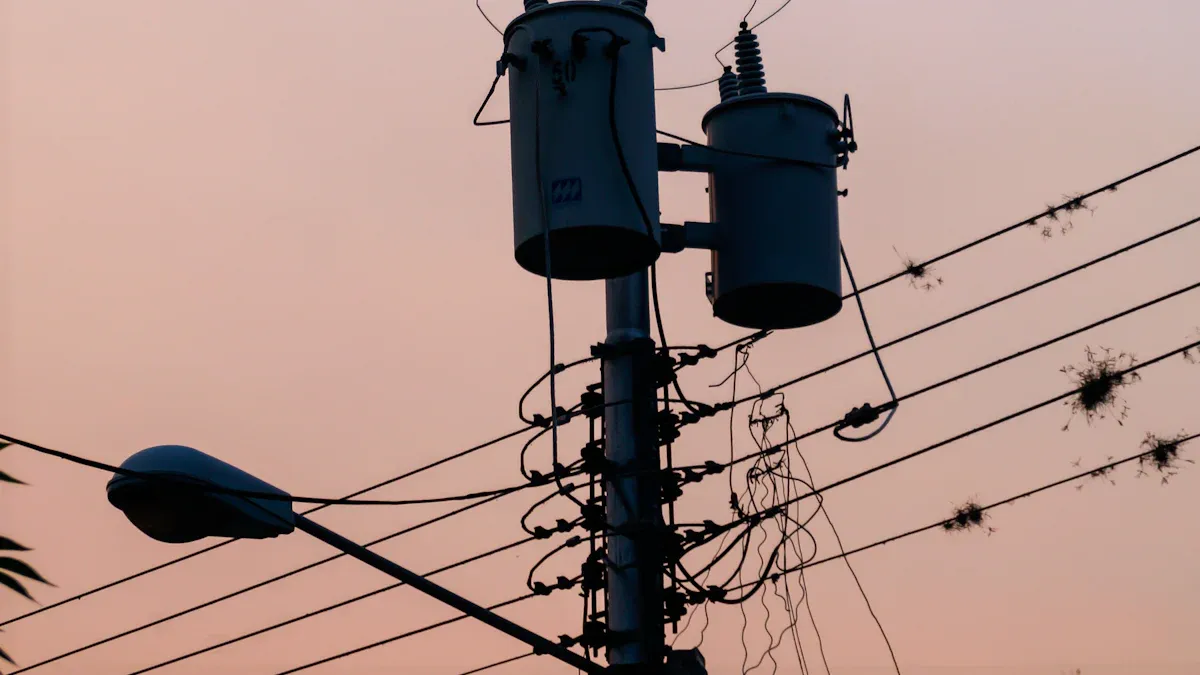
Structure and Voltage
When you look at the structure of single-phase power and three-phase power, you notice some big differences. Single-phase power uses two wires—one live and one neutral. Three-phase power uses three live wires and often a neutral. This setup changes how electricity flows and how much you can use at once.
Here’s a quick table to show you the typical voltage ranges for each system around the world:
| Power System Type | Typical Voltage Range |
|---|---|
| Single-Phase | 120V to 240V |
| Three-Phase | 208V to 415V |
Single-phase power usually runs at 120V or 240V. You see this in homes and small shops. Three-phase power works at higher voltages, from 208V up to 415V. This makes it perfect for big buildings and factories that need more energy.
Power Delivery and Efficiency
You get a smoother ride with three-phase power. The three-phase power system sends electricity in three waves, each spaced 120 degrees apart. This means the power never drops to zero. Your machines run steady, and you avoid annoying flickers or slowdowns.
- Three-phase power delivers a continuous flow, which boosts efficiency for heavy loads.
- The system keeps voltage steady over long distances, so you lose less energy.
- Motors on three-phase power start easier and run better, especially in factories.
Three-phase power supply systems feature three conductors carrying current at 120 degrees apart, providing a continuous magnetic field for smooth and efficient operation, ensuring higher efficiency ideal for large-scale applications.
Single-phase power, on the other hand, gives you a wave that rises and falls. This can cause dips in performance, especially if you try to run big equipment. You might notice lights dimming or motors struggling to start.
Here’s a table to help you compare:
| Aspect | Single-Phase Power | Three-Phase Power |
|---|---|---|
| Power Delivery | Intermittent | Continuous |
| Electrical Losses | Higher | Reduced |
| Performance Under Load | Less Efficient | More Efficient |
| Energy Stability | Fluctuates | Stable |
Typical Applications with Linkwell Products
You use single-phase power for homes, small offices, and places with light electrical needs. Linkwell’s electrical control panels and step down transformers help you manage and protect these systems. They keep your lights, appliances, and small machines running safely.
For bigger jobs, you turn to three-phase power. Factories, large commercial kitchens, and data centers all rely on three-phase power for their heavy equipment. Linkwell’s three-phase power transformers and control panels handle these high demands. They make sure your machines get steady, reliable power. You also find Linkwell’s step down transformers in telecom racks and industrial cabinets, where they convert high three-phase voltages to safer levels for sensitive electronics.
- Single-phase power is great for homes and small businesses.
- Three-phase power is the go-to for large buildings, factories, and anywhere you need lots of energy.
- Linkwell offers solutions for both, so you always get the right fit for your project.
If you want your system to run smoothly, Linkwell’s products help you get the most out of both single-phase power and three-phase power. You get efficiency, safety, and peace of mind—no matter the size of your operation.
Pros and Cons
Single-Phase Power
When you look at single-phase power, you’ll notice it’s a great fit for homes and small offices. You get a system that’s easy to set up and doesn’t need a lot of extra parts. This means you save money on installation and maintenance. The equipment is usually smaller, so you can fit it into tight spaces without any trouble.
Here’s a quick table to show you why single-phase power works well for residential users:
| Advantage | Explanation |
|---|---|
| Fewer components | You deal with fewer parts, making installation and repairs simple. |
| Energy efficiency | Perfect for low-energy needs, so you don’t waste money on extra equipment. |
| Compact equipment | Smaller devices fit easily in your home or small office. |
But single-phase power does have some limits, especially if you try to use it for bigger jobs. It’s not as efficient for heavy loads, and you might see voltage drops if you run long wires or lots of equipment. Motors can struggle, and you don’t get as much flexibility with balancing loads.
| Aspect | Description |
|---|---|
| Efficiency | Not as efficient for high power loads; you might see power losses and voltage drops. |
| Power Delivery | Best for low to moderate power needs, like homes and small shops. |
| Motor Performance | Works for small appliances, but motors can have uneven performance. |
| Load Balancing | You have fewer options to balance loads across the system. |
Tip: If you only need to power lights, TVs, or small appliances, single-phase power keeps things simple and affordable.
Three-Phase Power
Three-phase power steps things up for bigger needs. You get a steady, reliable flow of electricity, which is perfect for factories, large offices, or anywhere you run heavy equipment. This system keeps voltage stable, so your machines last longer and you avoid downtime.
Here’s what makes three-phase power stand out:
- You enjoy a near-unity power factor, which means less voltage drop and better efficiency.
- The voltage stays steady, helping your equipment last longer and reducing the risk of breakdowns.
- Heavy-duty machines, like CNC tools, run smoother and need less maintenance.
- Hospitals and factories rely on three-phase power for critical equipment that can’t afford interruptions.
- You get balanced load distribution, which keeps everything running smoothly and cuts down on energy loss.
But three-phase power isn’t always the best choice for everyone. If you run a small business or live in a house, you might find it costs more to install and maintain. The setup is more complex, and you may not need all that extra power.
- You face higher upfront costs because of the extra wiring and parts.
- Installation and repairs need special skills.
- For simple needs, three-phase power can feel like overkill.
Note: If you’re running a factory or a big commercial kitchen, three-phase power is worth the investment. For smaller spaces, single-phase power usually makes more sense.
Choosing the Right System
For Homes
When you pick a power system for your home, you want something simple and reliable. Most houses use single phase power. This type of single-phase electricity works well for lights, TVs, and kitchen appliances. You get a single-phase power supply that is easy to install and costs less up front. If you have a large home or plan to use many heavy appliances, you might consider three-phase systems. These can handle more power and keep everything running smoothly, even with electric vehicle chargers or big HVAC units.
Here’s a quick table to help you decide:
| Criteria | Single-Phase System | Three-Phase System |
|---|---|---|
| Suitable for | Typical homes | Large homes with heavy usage |
| Appliance compatibility | Standard appliances | Multiple heavy appliances, EV chargers |
| Installation cost | Lower | Higher |
| Power stability | Good for small to medium homes | Best for high energy stability |
| Future expansion | Limited | Great for future upgrades |
Keep in mind, local rules and utility company policies can affect what you can get. Sometimes, three-phase systems are not available in every neighborhood.
Tip: If you plan to expand your home or add lots of new tech, ask your utility about three-phase options.
For Businesses
Running a business means you need steady power. Small shops and offices often use single-phase power supply because it matches their needs and keeps costs down. If your business uses bigger machines or lots of computers, three-phase systems make more sense. They give you a steady flow of electricity and help avoid voltage dips.
| Key Factor | Single-Phase Power | Three-Phase Power |
|---|---|---|
| Load Capacity | Lower loads | Higher loads |
| Efficiency | Less efficient | More efficient |
| Power Delivery Consistency | Less consistent | Steady and constant |
| Number of Conductors | Two | Three (or four with neutral) |
You want to match your power system to your business size and future plans. If you expect to grow, three-phase systems offer more flexibility.
For Industry with Linkwell Solutions
Factories and large buildings need a lot of power. Three-phase systems are the top choice here. They run big machines, keep lights on, and support heavy equipment. You get better efficiency and fewer interruptions. Linkwell helps you set up the right system with electrical control panels, step down transformers, and power transformers. These products keep your single-phase power supply or three-phase setup safe and reliable.
| Application Type | Description |
|---|---|
| Large Machines | Power for big industrial machines |
| Big Buildings | Reliable supply for large facilities |
| Electrical Systems | Manage heavy loads safely and efficiently |
Linkwell works with you to design custom solutions. You get support for upgrades, expansions, and even government incentives that encourage efficient power use. With Linkwell, your single-phase power supply or three-phase system always fits your needs.
You see clear differences between single-phase and three-phase electricity. Here’s a quick table to help you compare:
| Aspect | Single-Phase | Three-Phase |
|---|---|---|
| Performance | Less efficient | More efficient |
| Stability | Voltage varies | Voltage stays steady |
| Application | Homes, small shops | Industry, large buildings |
Linkwell supports you with single-phase transformers for homes and three-phase solutions for factories. If you want safety and lower costs, choose the system that fits your needs. Reach out to Linkwell for expert advice and custom solutions. Understanding these basics helps you make smart choices for every project.
FAQ
What is the main difference between single phase and three phase electricity?
You get a single phase system with one alternating current, while a three phase system uses three currents. Three phase power gives you smoother, more reliable energy. You see single phase in homes and three phase in factories or big buildings.
Can I upgrade from single phase to three phase power at home?
Yes, you can upgrade if you need more power for things like electric vehicle chargers or large HVAC units. You’ll need a three-phase connection from your utility company. Always check local rules before making changes.
Why do factories prefer a three-phase supply over single phase?
Factories choose a three-phase supply because it delivers steady power for heavy machines. Three phase power keeps motors running smoothly and reduces downtime. You get better efficiency and fewer interruptions with a three-phase power supply.
How does a three-phase connection improve equipment performance?
A three-phase connection gives you constant voltage. Motors start easier and last longer. You avoid flickering lights and overheating. Three phase power helps your equipment run at its best, especially in a three phase system.
Do I need special equipment for a three-phase power supply?
Yes, you need equipment designed for a three-phase connection. This includes three-phase transformers, control panels, and wiring. Linkwell offers solutions for both single phase and three phase systems, so you always get the right fit.

